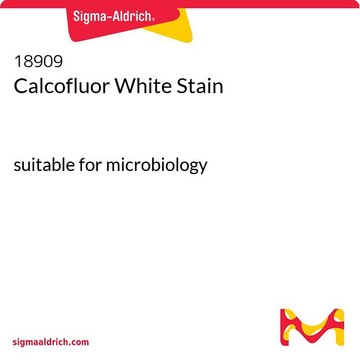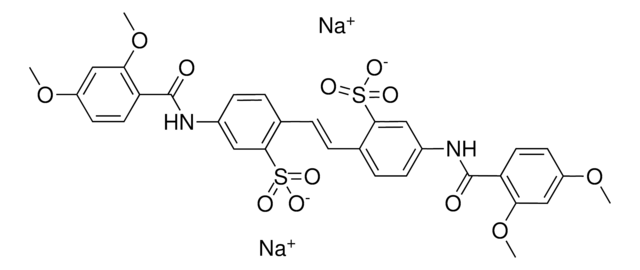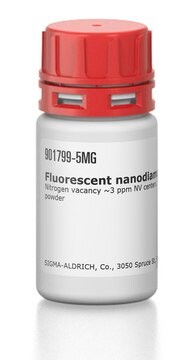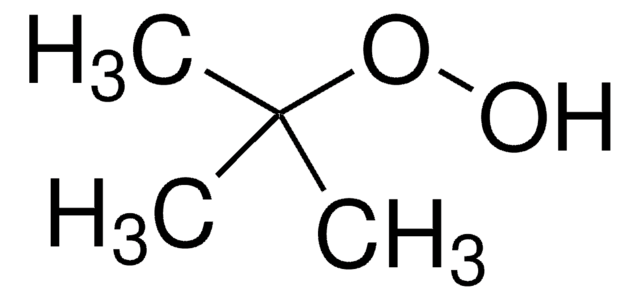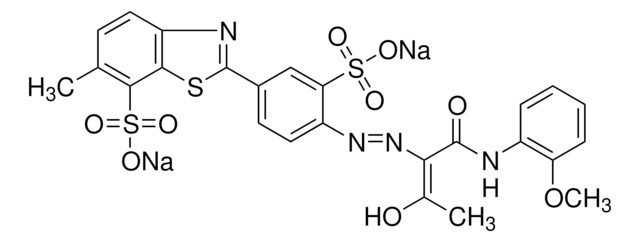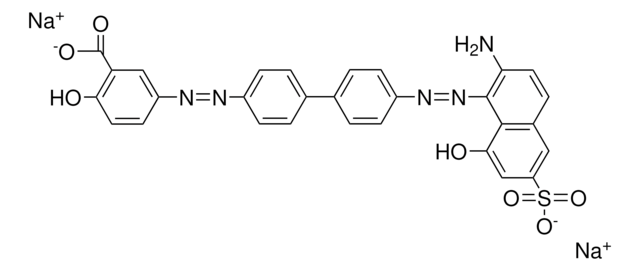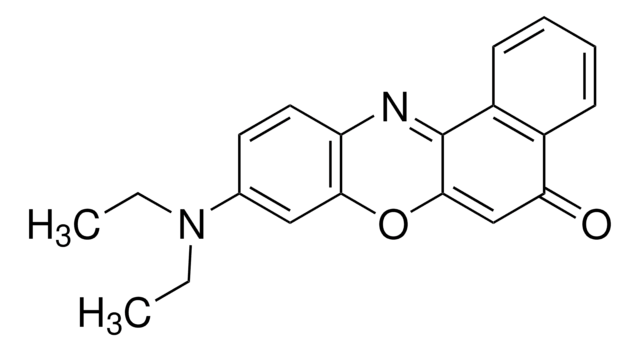910090
Fluorescent Brightener 28 disodium salt solution
used as a stain and brightening agent
Sinonimo/i:
Fluostain I, Calcofluor White LRP, Calcofluor White ST, Calcofluor white M2R, Tinopal LPW
About This Item
Prodotti consigliati
Stato
liquid
Concentrazione
25% in water
Stringa SMILE
[Na+].[Na+].OCCN(CCO)c1nc(Nc2ccccc2)nc(Nc3ccc(\C=C\c4ccc(Nc5nc(Nc6ccccc6)nc(n5)N(CCO)CCO)cc4S([O-])(=O)=O)c(c3)S([O-])(=O)=O)n1
Cerchi prodotti simili? Visita Guida al confronto tra prodotti
Descrizione generale
Applicazioni
- Fluorescent Brightener 28 is used in microscopy as fluorochromes, especially to visualize plant tissues by binding to cellulose.
- It is used in microbiology for staining pathogenic fungi, fungal cell walls, Candida albicans biofilms, for the automated counting of bacteria and spores, and as a viability stain.
- It is a rapid method for the detection of many yeasts and pathogenic fungi such as Microsporidium, Acanthamoeba, Pneumocystis, Naegleria, and Balamuthia species.
- It is used industrially as a fluorescent brightening agent for cellulose and polyamide fabrics, paper, detergents, and soaps.
- It has been used in the identification and study of the structure and biosynthesis of chitin from the freshwater sponge Spongilla lacustris, and to elucidate the location of chitin in skeletal structures.
Azioni biochim/fisiol
Caratteristiche e vantaggi
- Facilitates rapid detection of many pathogenic yeasts and fungi.
- As a brightening agent, its addition can offset the tendency of white materials to yellow with age.
Codice della classe di stoccaggio
12 - Non Combustible Liquids
Classe di pericolosità dell'acqua (WGK)
WGK 1
Punto d’infiammabilità (°F)
Not applicable
Punto d’infiammabilità (°C)
Not applicable
Scegli una delle versioni più recenti:
Certificati d'analisi (COA)
Non trovi la versione di tuo interesse?
Se hai bisogno di una versione specifica, puoi cercare il certificato tramite il numero di lotto.
Possiedi già questo prodotto?
I documenti relativi ai prodotti acquistati recentemente sono disponibili nell’Archivio dei documenti.
Il team dei nostri ricercatori vanta grande esperienza in tutte le aree della ricerca quali Life Science, scienza dei materiali, sintesi chimica, cromatografia, discipline analitiche, ecc..
Contatta l'Assistenza Tecnica.